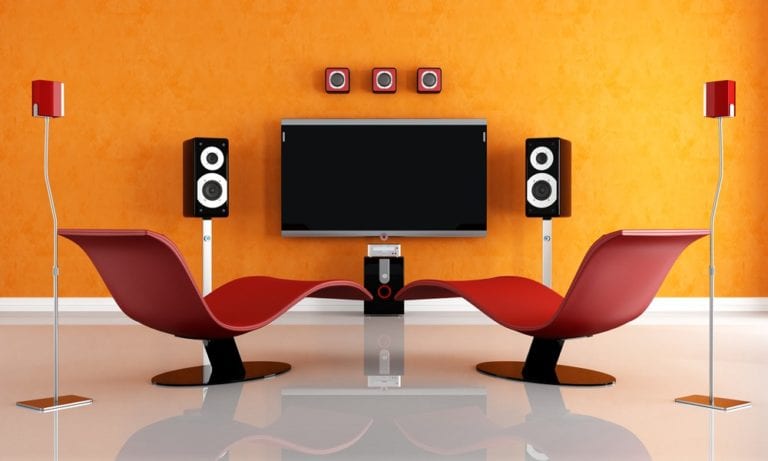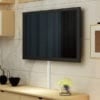Whether you have a home theater, a man cave, or just a TV in your living room, installing a surround sound system will elevate any movie you watch. The speakers that come built into your TV just can’t handle the deep bass of an explosion or the soft footsteps that a speaker system provides. If you’ve been shopping around for speakers, you might not know whether to get a 5.1 surround sound system or a 7.1 surround sound system. Here’s everything you need to know about what surround sound is and how to properly set up your surround sound system.
What is Surround Sound?
Surround sound is a term used for audio systems that have multiple speakers placed around a listener to achieve a more immersive audio effect. With a surround sound system, you will be able to hear sounds coming from multiple directions, which should also improve the audio clarity.
You can tell how many speakers a surround sound system has by looking at the number in its name. The first number tells you how many speakers are in the system, while the second number tells you how many subwoofers the system has. For example, a 5.1 system comes with 5 speakers and 1 subwoofer.
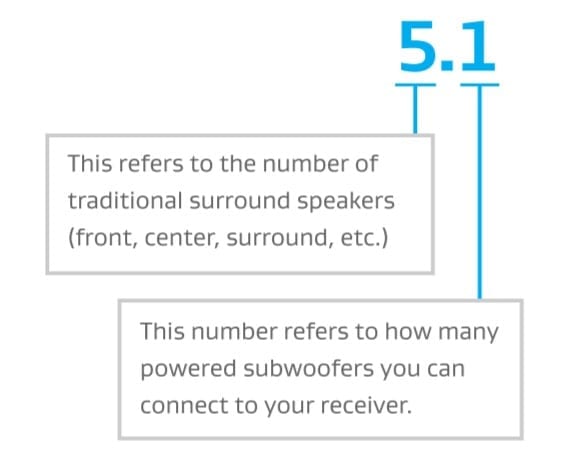
If you see a sound system that has a 2 at the end, like a 7.2 system, that means it comes with two subwoofers. Adding a second subwoofer helps even out the bass, which might be too loud on one side with only a single subwoofer. If you do get a sound system with two subwoofers, they should be placed on opposite sides of your screen.
If you see three numbers in your surround sound system, the last number will show you how many “upward-firing” or “downward-firing” speakers it has. For example, a 5.1.4 surround sound system has 5 surround sound speakers, 1 subwoofer, and 4 upward- or downward-firing speakers.
These upward- or downward-firing speakers can support audio formats like Dolby Atmos, which produces a 3D sound that comes from all directions, including above you.
Read More: What is Dolby Atmos?
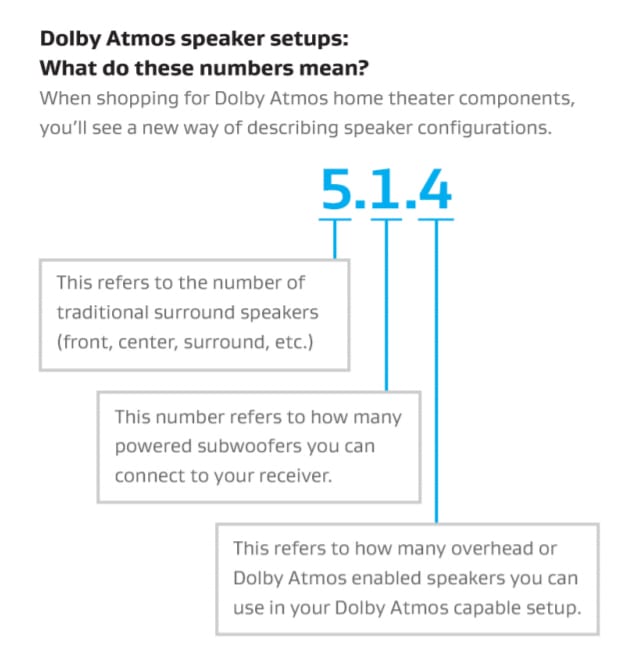
Each speaker in a surround sound system has its own purpose, and each speaker should be placed in a specific location for the best audio experience. Here are the different kinds of surround sound setups, what each speaker in the system does, and how to set each of them up.
What Is 2.1 Surround Sound?
A 2.1-channel surround sound system has two front speakers that give you stereo sound and a subwoofer that adds deep bass. You should place the front left and right speakers at a 22-30-degree angle and the subwoofer should go on the floor to the right or left of your screen.
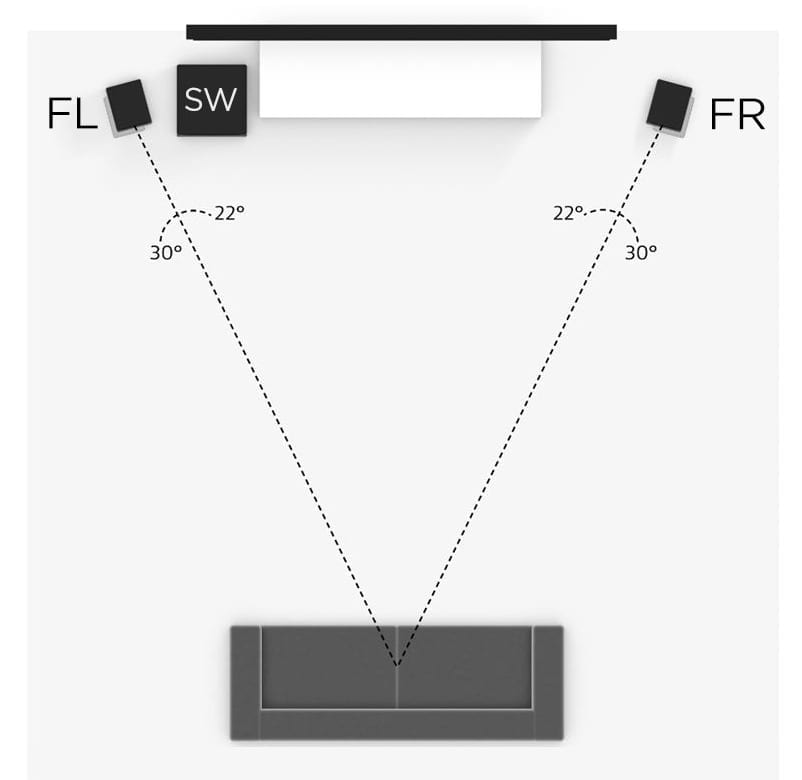
Ideally, you want the two front stereo channels to be at ear-level and about two to three feet away from the wall. You should also avoid placing the subwoofer in the corner, so you don’t get an echo.
While this is the most basic setup, a 2.1 surround sound setup will deliver much better sound than your TV’s built-in speakers.
What Is 3.1 Surround Sound?
A 3.1-channel surround sound system has two front speakers, a subwoofer, and a center speaker. You should place the center channel speaker just below the middle of your screen. This center channel adds more depth and clarity to the audio, especially to the dialogue.
Without a center channel, all the dialogue and sound effects will come from the same channels. For example, if you’re watching a movie with characters that are walking down a busy street, all street noises will come from the same speakers as the dialogue, which will make it harder to hear what they’re saying.
With a 3.1-channel surround sound system, all the sound effects will come from the stereo speakers, while the dialogue will be played from the center channel. This makes it easier to actually be able to hear what the characters are saying.
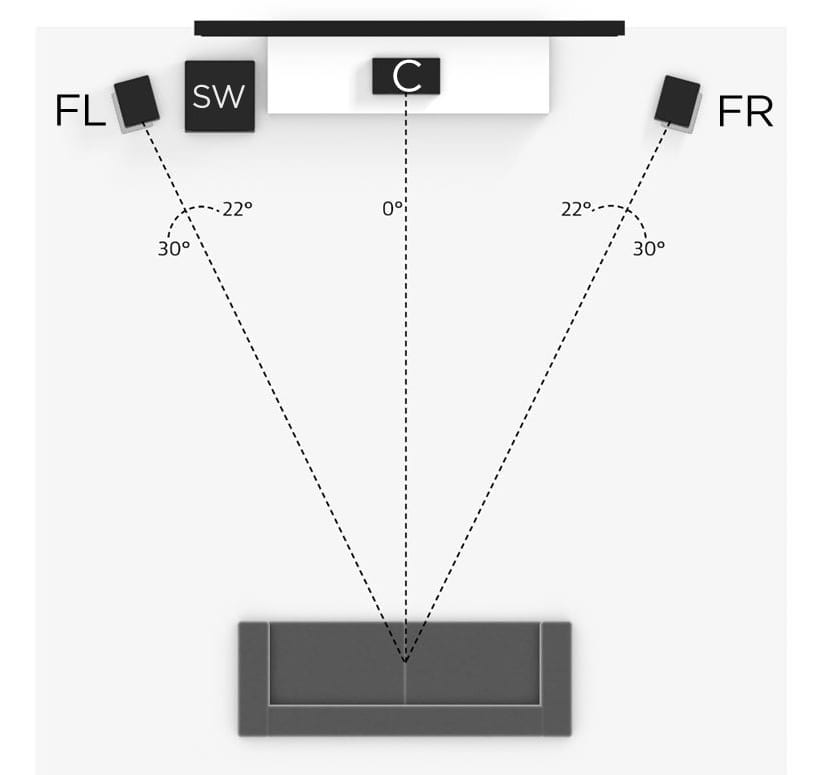
This is the ideal setup for anyone who wants to elevate their home theater on a budget but doesn’t have enough room for a full surround sound system.
What Is 5.1 Surround Sound?
A 5.1-channel surround sound system has two front speakers, a subwoofer, a center channel, and two surround speakers. With a 5.1 setup, you should place the surround speakers behind the listener at a 110-120-degree angle.
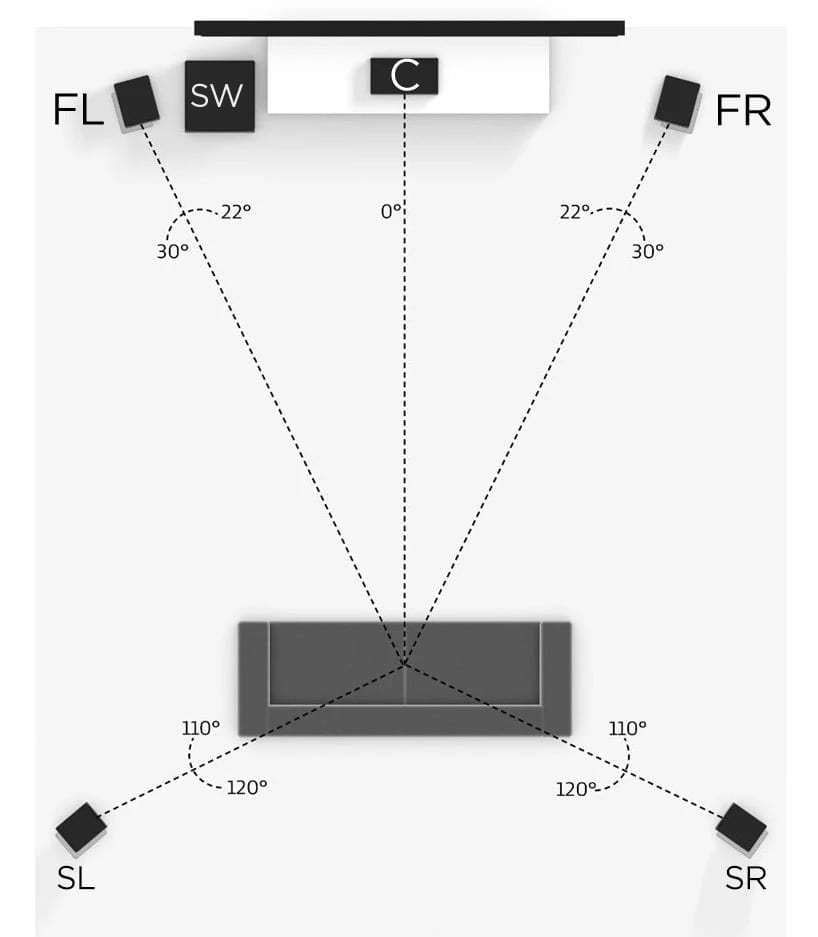
A 5.1-channel setup gives you a “true” surround sound experience because it actually surrounds you in sound from all directions. It is also the most common setup, and most DVDs, broadcast TV, and media streaming sources will use 5.1 surround sound.
The two surround speakers create a much more immersive effect, which can instantly improve your home theater experience. But, if you do not have room to place your surround speakers at an angle behind you, they can also be placed on either side of your seating area at a 90-degree angle.
What Is 7.1 Surround Sound?
A 7.1 surround sound setup has two front speakers, a subwoofer, a center channel, two surround speakers, and two rear speakers. With this setup, you should place the rear speakers behind the listener at a 135-150-degree angle.
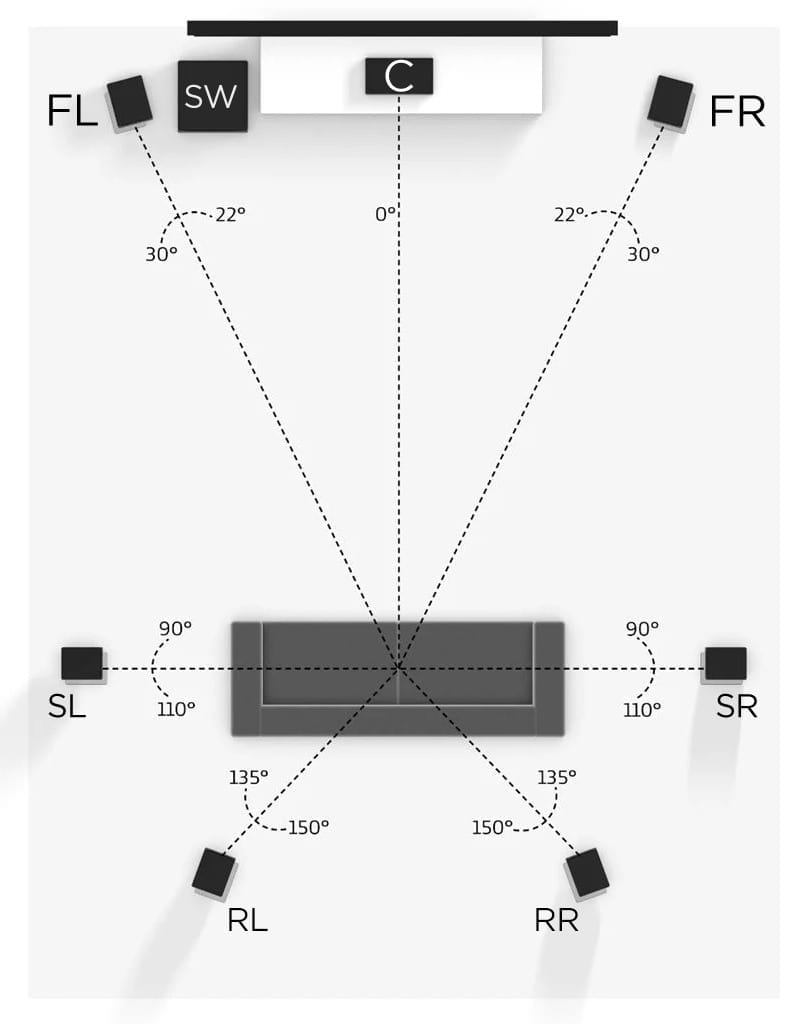
Unlike a 5.1 speaker setup, a 7.1 surround sound system gives you audio from behind. Since all of the audio that comes from behind is now handled by the rear speakers, you can move your surround speakers to either side of your seating area at a 90-110-degree angle.
With so many speakers surrounding you, this setup is usually reserved for more complex home theaters.
What Is 9.1 Surround Sound?
A 9.1 surround sound setup has two front speakers, a subwoofer, a center channel, two surround speakers, two rear speakers, and two wide speakers. The two wide speakers should be placed in front of the listener at a 50-70-degree angle.
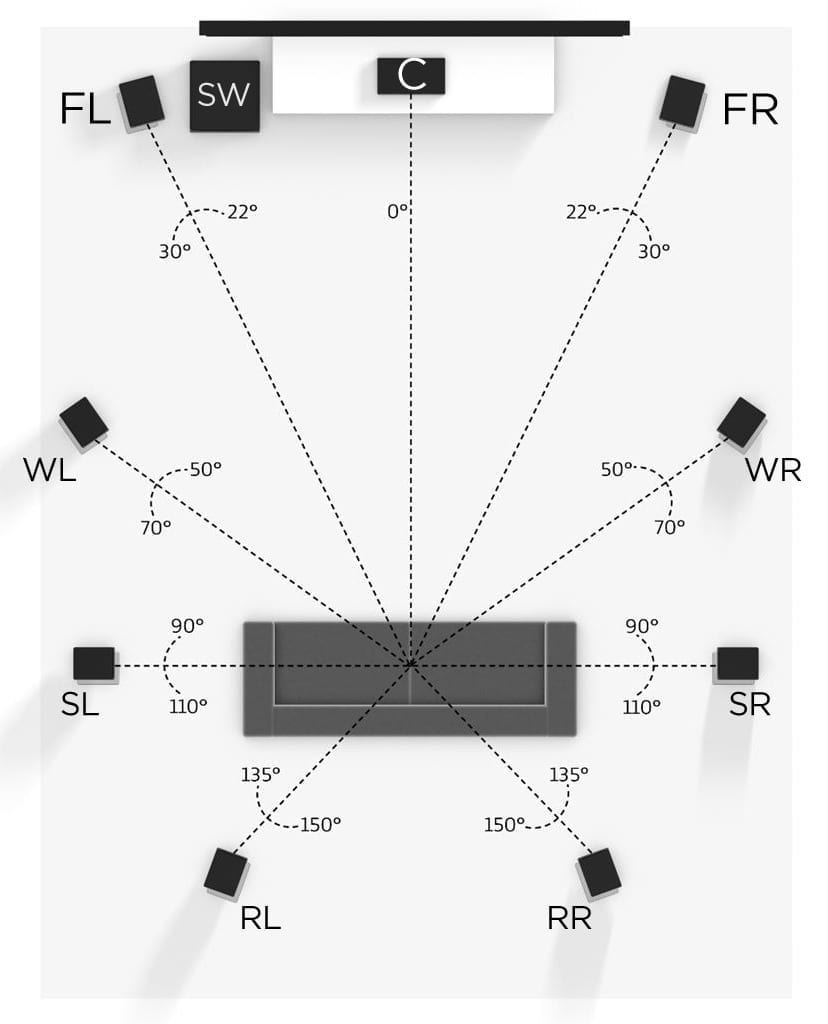
With a 9.1 setup, the addition of the wide speakers will bridge the gap between the front and surround speakers. That means you will have sound coming at you from almost every angle.
Since this is such a complicated setup, however, it is generally reserved for larger home theater rooms. However, it might be hard to find an inexpensive AV receiver that works with a 9.1 setup.
How to Set Up a Surround Sound System
To set up a surround sound system, you will need an AV (audio/video) receiver. This device allows you to hook up and control multiple speakers. It then processes, separates, and amplifies your audio to drive your speakers.
An AV Receiver also lets you switch between different audio and video sources, so you can easily switch between your CD player, Xbox, or TV audio with the push of a button.
Depending on what kind of AV receiver you have, all you need to do to set up your system is to run wires from your speakers to the AV receiver. You should see the name of each speaker next to a connection on the back of your AV receiver.
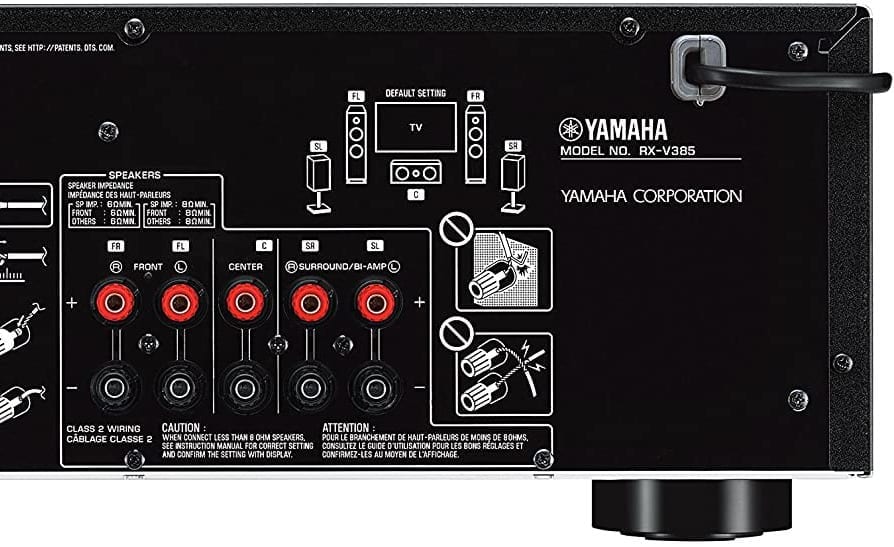
If you don’t want to see lots of unsightly speaker wires running through your home theater, you can either conceal them in the walls or buy a wireless setup. However, even wireless speakers need to be powered, so you will still have some wires to deal with.
